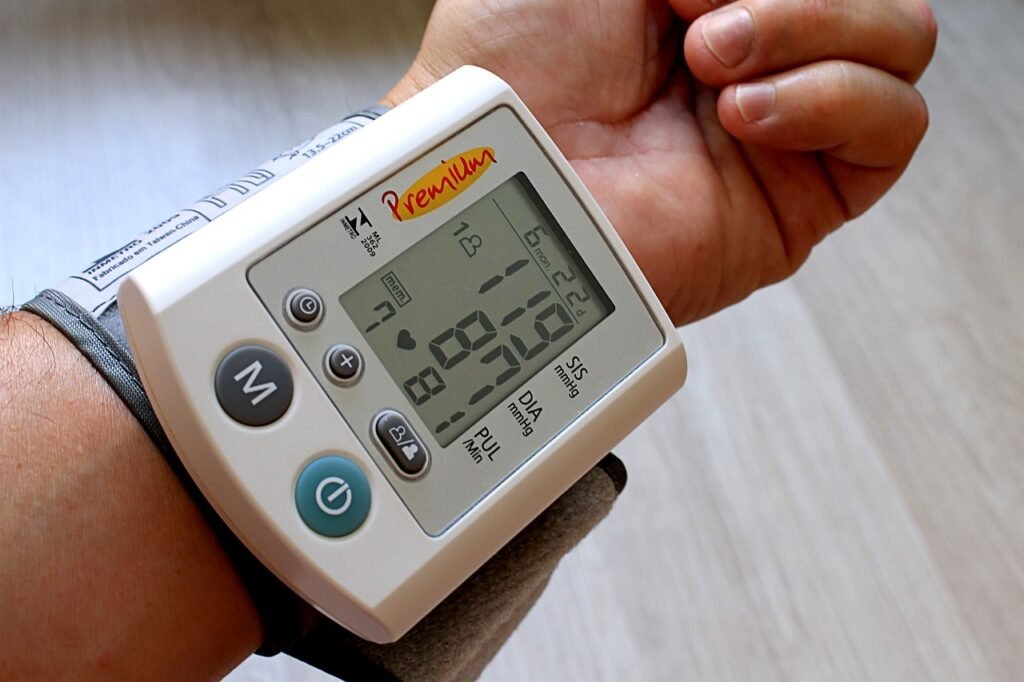
Intro
Permissive hypertension is a concept that has been gaining attention in medical practice, particularly in the management of acute stroke and other critical conditions. This approach involves allowing higher blood pressure levels in specific clinical scenarios, with the belief that this may improve patient outcomes. While traditional hypertension management focuses on reducing high blood pressure to prevent complications, permissive hypertension recognizes the potential benefits of maintaining elevated blood pressure under certain circumstances. This blog post will delve into the intricacies of permissive hypertension, exploring its application, rationale, and implications in various medical settings.
Understanding Permissive Hypertension in Medical Practice

Permissive hypertension is a strategic medical approach that departs from the conventional focus on aggressive blood pressure control.
Instead, it acknowledges situations where maintaining higher blood pressure might be beneficial.
For example, studies such as the INTERACT 1 trial have shown that keeping systolic blood pressure (SBP) below 140 mm Hg can significantly reduce hematoma progression compared to a target of less than 180 mm Hg in acute cerebral hemorrhage.
Similarly, findings from the INTERACT II trial reveal that larger reductions in SBP during the acute phase of intracerebral hemorrhage are associated with a decreased risk of poor outcomes, which include death or disability.
These insights underscore the potential benefits of permissive hypertension in specific clinical contexts.
Permissive hypertension is particularly relevant in acute care settings where maintaining optimal blood flow to vital organs is critical.
By allowing higher blood pressure, clinicians can ensure adequate perfusion, particularly to the brain, thereby potentially improving outcomes in patients with acute ischemic stroke or traumatic brain injury.
In ischemic stroke, the strategy is to maintain cerebral perfusion pressure to support brain tissue survival until reperfusion therapies can be administered.
The approach is nuanced and requires careful consideration of the timing and extent of blood pressure management to avoid exacerbating the condition.
Similarly, in traumatic brain injury, guidelines from the Brain Trauma Foundation emphasize the importance of maintaining adequate cerebral perfusion pressure to decrease mortality and improve neurological outcomes.
Research continues to explore the best practices for implementing permissive hypertension.
Clinical trials and studies aim to identify specific patient populations and scenarios where this approach offers the most benefit.
As the medical community gathers more evidence, the protocols and guidelines for permissive hypertension will likely become more refined, balancing the need for maintaining adequate perfusion with the risks of uncontrolled hypertension.
Understanding the complexities of permissive hypertension helps healthcare professionals make informed decisions, ensuring that patients receive the most appropriate care tailored to their specific medical needs.
The Rationale Behind Permissive Hypertension

The rationale behind permissive hypertension stems from the recognition that aggressive blood pressure reduction can sometimes be counterproductive in acute medical scenarios.
In conditions like ischemic stroke, the primary concern is ensuring adequate blood flow to the brain.
A too-drastic reduction in blood pressure may impede this goal, leading to insufficient perfusion and potential worsening of the patient’s condition.
Permissive hypertension, therefore, takes a different approach by allowing higher blood pressure levels to support cerebral perfusion pressure, ensuring that brain tissue remains viable during critical periods.
This strategy is crucial when dealing with ischemic stroke because maintaining adequate blood flow can significantly impact patient outcomes until definitive treatments, such as reperfusion therapies, can be administered.
Additionally, the approach extends to other acute medical conditions.
For instance, in patients with traumatic brain injury, maintaining cerebral perfusion pressure is vital for neurological function and survival.
Traditional aggressive blood pressure management could compromise this critical blood flow, thereby worsening the prognosis.
The concept of permissive hypertension is also influenced by studies demonstrating that less aggressive blood pressure management may lead to better outcomes.
For example, research has shown that in certain populations, maintaining a higher blood pressure threshold is associated with improved survival rates and reduced disability.
This underscores the need for a balanced approach that weighs the benefits of controlled hypertension against the risks of overly aggressive treatment.
Overall, permissive hypertension acknowledges the complex interplay between blood pressure and organ perfusion, particularly in acute settings.
By allowing for higher blood pressure levels in specific scenarios, healthcare providers aim to optimize perfusion to vital organs, such as the brain, thereby improving the chances of recovery and reducing the risk of adverse outcomes.
This nuanced approach is continually being refined through ongoing research and clinical trials, guiding medical professionals in their efforts to provide tailored and effective care for their patients.
Permissive Hypertension in Acute Stroke Management

Permissive hypertension plays a crucial role in managing acute ischemic stroke by maintaining optimal cerebral perfusion pressure to support brain tissue survival until reperfusion therapies can be administered.
Recent meta-analyses suggest that lowering blood pressure in patients shortly after stroke onset, specifically within the first six hours, showed trends toward less death or dependency and improved outcomes, regardless of stroke type, medication, or blood pressure target.
These findings highlight the nuanced approach required in stroke management, where permissive hypertension can be part of the strategy to enhance recovery.
The goal is to prevent further damage to the brain by ensuring it receives sufficient blood flow during the acute phase.
A significant drop in blood pressure could impede this critical perfusion, potentially worsening the patient’s condition.
Therefore, allowing higher blood pressure in the early stages of ischemic stroke is often seen as a protective measure.
Current stroke management guidelines support this approach by recommending careful monitoring and controlled adjustment of blood pressure levels based on individual patient needs.
This strategy aims to strike a balance between preventing excessive hypertension and avoiding the risks associated with aggressive blood pressure reduction.
Research continues to refine these guidelines, with studies focusing on identifying patient subgroups that might benefit most from permissive hypertension.
Factors such as the stroke’s severity, the patient’s overall health, and the timing of intervention play essential roles in determining the best course of action.
Permissive hypertension is not a one-size-fits-all solution; it requires a tailored approach that considers each patient’s unique clinical picture.
By doing so, healthcare providers can optimize outcomes, reducing the likelihood of long-term disability and improving overall survival rates.
This careful balance of risks and benefits underscores the importance of individualized care in acute stroke management.
Implications for Traumatic Brain Injury Patients

Permissive hypertension is particularly relevant in the management of traumatic brain injury (TBI) patients, especially those with severe injuries.
In these cases, maintaining adequate cerebral perfusion pressure (CPP) is crucial for reducing mortality and improving neurological outcomes.
Guidelines from the Brain Trauma Foundation emphasize the importance of routine CPP monitoring in severe TBI cases, noting that routine CPP monitoring in severe TBI patients can decrease mortality at two weeks. The recommended CPP target for survival and favorable outcomes is between 60 mm Hg and 70 mm Hg.
This data underscores how permissive hypertension can help maintain the critical blood flow needed to support brain function during the acute phase of injury.
The practice of allowing higher blood pressure in TBI patients is a calculated decision to ensure that the brain receives sufficient oxygen and nutrients to minimize further damage.
This approach contrasts with traditional aggressive blood pressure management, which might inadvertently lower CPP to detrimental levels, exacerbating brain injury and worsening patient outcomes.
Permissive hypertension seeks to strike a balance by optimizing blood pressure to support cerebral perfusion without causing undue stress on other bodily systems.
Clinical trials and studies continue to investigate the optimal conditions for implementing permissive hypertension in TBI patients.
Factors such as the severity of the injury, the patient’s overall health, and real-time monitoring capabilities are critical in tailoring this approach to individual needs.
Advanced monitoring technologies and continuous assessment tools are also being explored to better manage and adjust CPP targets dynamically, thereby improving the efficacy of permissive hypertension strategies in real-time clinical settings.
The nuanced understanding of permissive hypertension’s role in TBI care reflects an evolving approach that prioritizes patient-specific factors.
As evidence mounts, guidelines and protocols are likely to become more sophisticated, offering clearer directives for healthcare providers to optimize patient outcomes effectively.
Guidelines and Protocols for Implementing Permissive Hypertension

Guidelines for permissive hypertension emphasize balancing the need for blood pressure control with the risks of lowering it too much.
The ATACH 2 trial, which explored aggressive versus standard blood pressure management, found no significant difference in outcomes between the two groups.
These findings suggest that protocols should consider patient-specific factors to avoid potential complications from overly aggressive blood pressure reduction.
In clinical practice, guidelines often recommend a nuanced approach, where blood pressure targets are tailored to individual patient needs.
For instance, in cases of acute ischemic stroke, the goal is often to maintain systolic blood pressure within a range that ensures adequate cerebral perfusion without risking further vascular damage.
This involves continuous monitoring and adjusting treatment protocols as patient conditions evolve.
Healthcare providers must also be vigilant about potential complications arising from permissive hypertension, such as increased risks of hemorrhage or other vascular events.
Therefore, patient selection criteria are critical.
Not all patients are suitable candidates for permissive hypertension; those with certain comorbidities or who are at higher risk for adverse events may require alternative strategies.
Advanced monitoring technologies play a significant role in implementing permissive hypertension protocols.
Continuous blood pressure monitoring allows for real-time adjustments, ensuring that therapeutic goals are met without exposing patients to unnecessary risks.
Additionally, integrating patient-specific data, such as underlying health conditions and response to treatment, can help refine blood pressure management strategies.
Ongoing research and clinical trials are essential for developing and updating these guidelines.
As new evidence emerges, the medical community can better define which patient populations benefit most from permissive hypertension and under what circumstances.
This evolving landscape necessitates flexibility and a willingness to adapt protocols based on the latest scientific insights and technological advancements.
Balancing Risks and Benefits in Permissive Hypertension

Balancing the risks and benefits of permissive hypertension requires a nuanced understanding of patient-specific factors and clinical scenarios.
While permissive hypertension can be advantageous in acute settings by ensuring adequate perfusion to vital organs, it is not without potential drawbacks.
For instance, higher blood pressure levels might increase the risk of complications such as hemorrhage or other vascular events.
Clinical evidence underscores the importance of maintaining a careful balance.
Research by Klauber et al. has shown that patients admitted with a systolic blood pressure below 85 mm Hg had a mortality rate of 35%, compared to only 6% in those with higher SBP (Klauber et al.) .
These findings highlight the dangers of overly aggressive blood pressure reduction and emphasize the need for tailored treatment strategies.
In practice, permissive hypertension demands continuous monitoring and dynamic adjustments to ensure therapeutic goals are met without exposing patients to unnecessary risks.
Advanced monitoring technologies play a critical role, allowing healthcare providers to make real-time adjustments based on the patient’s condition and response to treatment.
This approach ensures that blood pressure management is both precise and responsive to changing clinical needs.
Patient selection criteria are also pivotal in implementing permissive hypertension effectively.
Not all patients are suitable candidates for this approach.
Those with certain comorbidities or who are at higher risk for adverse events may require alternative strategies.
By carefully selecting patients and employing advanced monitoring, healthcare providers can optimize outcomes while minimizing potential complications.
Ultimately, the practice of permissive hypertension involves a delicate balance.
While the benefits of maintaining higher blood pressure in specific scenarios are clear, the risks must be judiciously managed.
Ongoing research and clinical trials continue to refine this approach, offering clearer guidelines and protocols to navigate the complexities of permissive hypertension in various medical settings.
Case Studies Illustrating Permissive Hypertension in Practice

In examining the application of permissive hypertension, real-life case studies offer critical insights into its practical benefits and challenges.
Consider a case involving a 68-year-old male patient with an acute ischemic stroke.
Upon arrival at the emergency department, his systolic blood pressure was noted to be 185 mm Hg.
Instead of rapidly lowering his blood pressure, clinicians opted for a permissive hypertension approach to maintain cerebral perfusion.
This decision aimed to optimize brain tissue viability until reperfusion therapy could be administered.
Over the next 24 hours, careful monitoring and controlled adjustments ensured that his blood pressure remained within a targeted range, ultimately contributing to a positive outcome with minimal neurological deficits.
Another example involves a 45-year-old female patient with a severe traumatic brain injury.
Following an automobile accident, her initial assessment revealed elevated intracranial pressure and a systolic blood pressure of 160 mm Hg.
The medical team, guided by the Brain Trauma Foundation’s recommendations, decided to maintain her cerebral perfusion pressure within the 60-70 mm Hg range.
This permissive hypertension strategy was crucial in providing adequate oxygen and nutrients to her brain during the acute phase.
Through continuous monitoring and dynamic adjustments, her condition stabilized, and she showed significant neurological improvement over the following weeks.
In a different scenario, a 72-year-old patient experienced an intracerebral hemorrhage.
Initial management focused on maintaining systolic blood pressure below 140 mm Hg to mitigate hematoma expansion.
However, when complications arose, the team adjusted their approach, allowing for slightly higher blood pressure to support cerebral perfusion.
This nuanced strategy, informed by ongoing assessment and clinical judgment, helped balance the need for controlling hemorrhage progression with the necessity of ensuring adequate brain perfusion.
These case studies underscore the importance of individualized care in permissive hypertension, highlighting how tailored approaches can optimize patient outcomes in complex medical situations.
Each example illustrates the necessity of combining clinical expertise with real-time monitoring to navigate the delicate balance required in permissive hypertension effectively.
Future Directions and Research in Permissive Hypertension

As the medical field progresses, ongoing research is crucial to delineate the contexts in which permissive hypertension provides the most benefit.
Emerging studies aim to refine the criteria for its application, considering factors like patient demographics, pre-existing health conditions, and advancements in real-time monitoring technologies.
This future-focused approach seeks to tailor permissive hypertension strategies to individual patient profiles more accurately, enhancing the precision and effectiveness of care.
The advent of advanced monitoring tools, such as continuous blood pressure monitors and cerebral perfusion measurement devices, is expected to play a pivotal role in these developments.
These technologies enable healthcare providers to make more informed decisions, allowing for dynamic adjustments to blood pressure management in real-time.
As these tools become more integrated into clinical practice, they will likely facilitate a more responsive and nuanced application of permissive hypertension.
Additionally, ongoing clinical trials are set to explore various subpopulations and clinical scenarios to pinpoint where permissive hypertension can be most advantageous.
By examining different patient groups, such as those with specific comorbidities or varying severities of acute conditions, researchers aim to build a more comprehensive understanding of how permissive hypertension can be optimally employed.
Moreover, as evidence accumulates, there will be opportunities to update and refine existing guidelines and protocols.
This evolution will ensure that permissive hypertension strategies are backed by the latest scientific insights, improving patient outcomes and minimizing risks.
The future of permissive hypertension lies in a more individualized, evidence-based approach, bolstered by technological advancements and rigorous research.
This path forward promises to enhance the efficacy and safety of managing acute and critical conditions through permissive hypertension.
